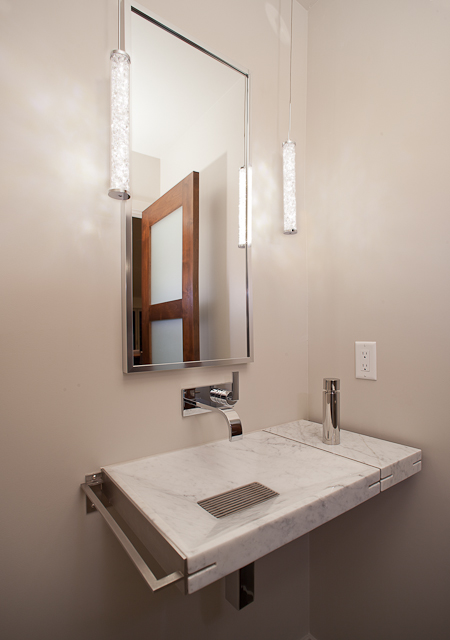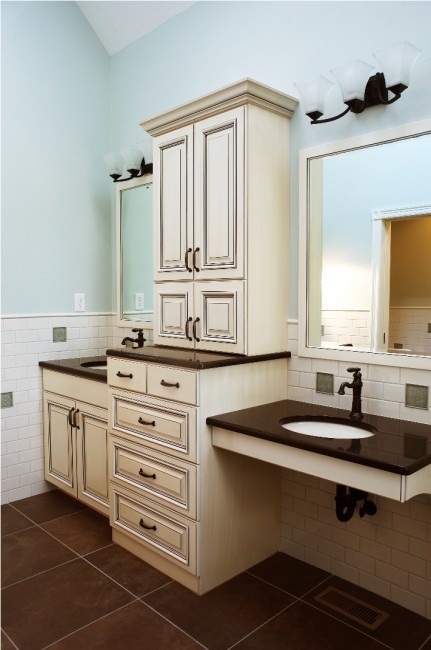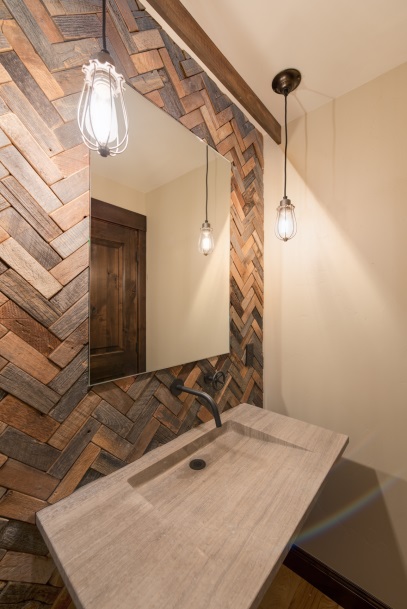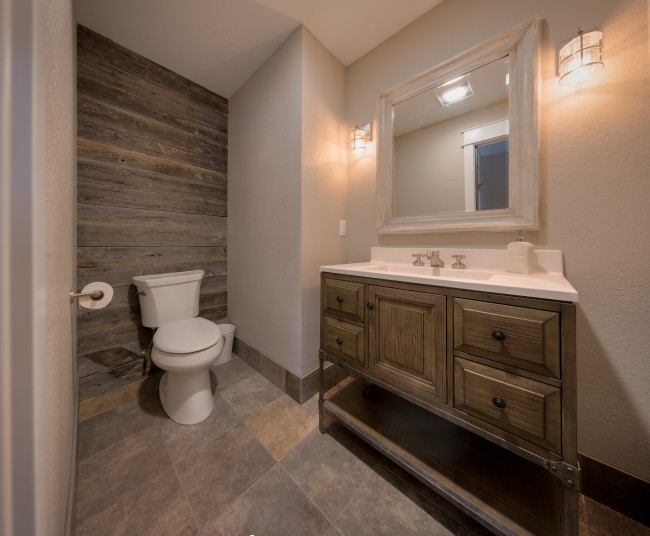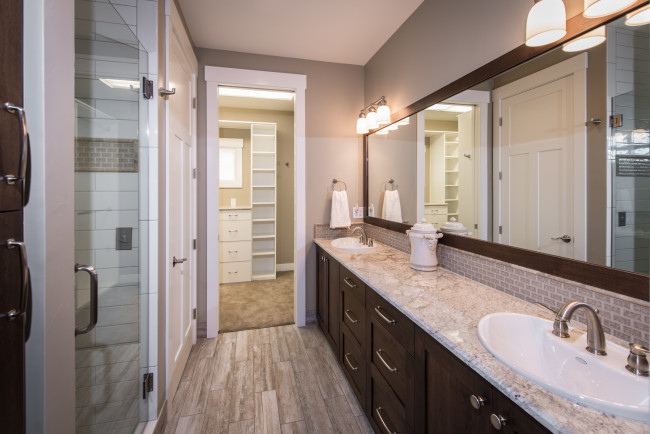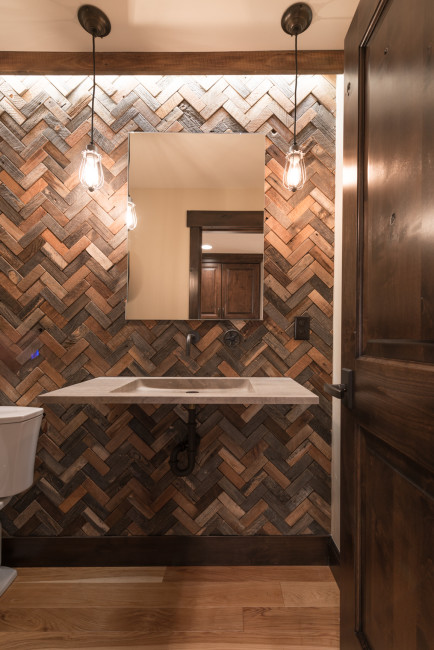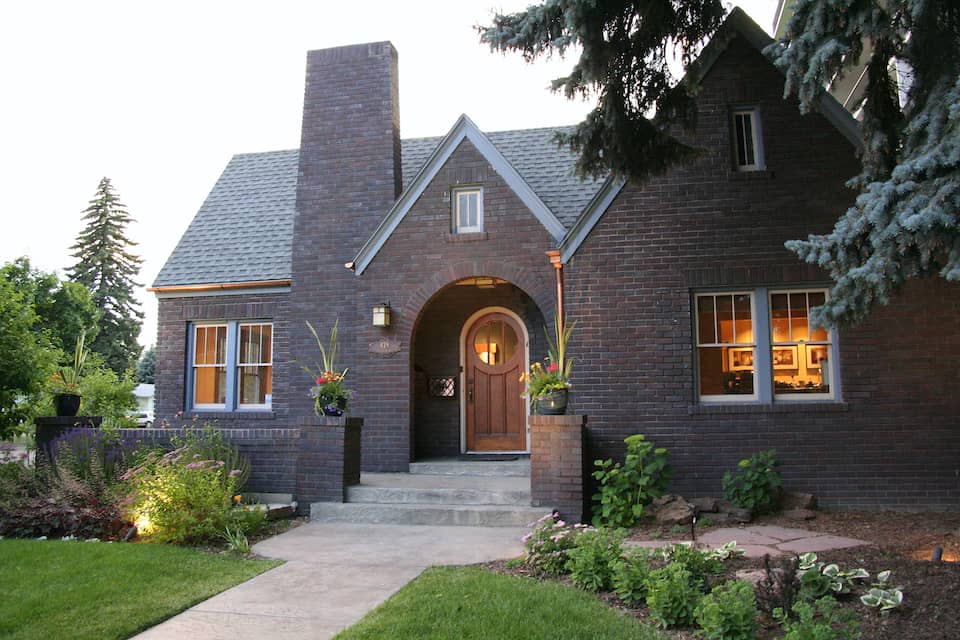As we head into the holidays, the topic of kitchen remodeling will be covered a lot, and rightly so. The kitchen is command central for meals and entertaining, and we’ve written about this room from all angles over the years.
Today we’re addressing a less glamorous, yet equally important, topic essential to successful holiday hosting: the guest bathroom.
Here are SIX KEY THINGS to consider when remodeling a bathroom meant for multiple users.
1. Location and Privacy
As you plan your bathroom, think location-location-location. Work with existing plumbing lines as much as possible to save time and money. The addition of copper pipes, or relocating an existing toilet drain, can substantially increase costs.
Whenever possible, locate a main-floor bathroom away from the kitchen and dining areas. Nobody enjoys direct exposure to the privy when eating or preparing food. And while we’re on the unsavory subject, if the guest bath must be located in a high-traffic area, add more wall insulation and use a solid wood door to help protect privacy. A good fan will help mask sounds and ensure proper venting, too.
2. Skilled Labor
You might be a handy person, but be realistic about your capabilities and hire professionals when a task is beyond your skill set. The improper installation of electrical outlets, plumbing fixtures, lighting and mirrors can pose serious safety issues.
When remodeling an older bathroom, it’s common to find hidden problems under flooring or behind wall tile. Unforeseen issues with plumbing, wiring, mold and asbestos can dramatically affect your budget and completion date. Professional abatement and repair will protect you and your guests and is well worth the investment.
3. Durable Materials
Guest bathrooms often see a lot of traffic during the holidays. It pays to spend a little extra on quality faucets, flooring and toilets that can handle the wear and tear. Granite and quartz countertops look great and hold up extremely well, and some bathroom-size slabs are reasonably priced.
4. Water Efficiency
To conserve water, Consumer Reports recommends WaterSense-qualified toilets that use 1.28 gallons per flush. According to the Environmental Protection Agency, water-efficient commodes save the average family of four roughly 16,000 gallons of water and more than $100 each year. Using an aerator on your faucet can reduce the water flow in your sink by more than 30 percent. These two simple ideas can save both water and money in the long run.
5. Adequate Storage
Make sure there is enough room for guests to set a purse or toiletry bag on the sink or counter. If possible, include cabinetry, shelves, linen closet or vanity to store extra towels and other essential supplies, and keep it stocked. If using a medicine cabinet, mount it flush with the wall to make the bathroom appear larger.
6. Accessibility
Incorporate universal design features to make your bathroom accessible for all without sacrificing style. Elderly relatives, and guests using wheelchairs or crutches, will appreciate a wall-mounted sink, zero-threshold shower with bench, lever handles on doors and faucets, smooth flooring and a comfort-height toilet. If this is your forever home, then a universally designed bathroom will serve you well during your golden years. And if you plan to sell, an accessible bathroom can add equity to your home.
Whether you’re converting a closet into a small powder room or updating a larger full bath, it’s smart to think it through before diving into a guest bathroom project. Flesh out a thoughtful plan first and avoid flushing your remodeling dollars down the drain later.
This content originally appeared in Dwight’s and Bryan’s November 2015 Building Solutions column in the Fort Collins Coloradoan.
